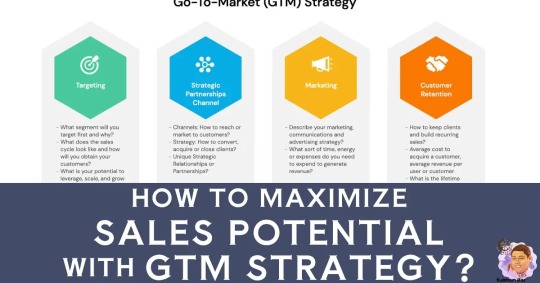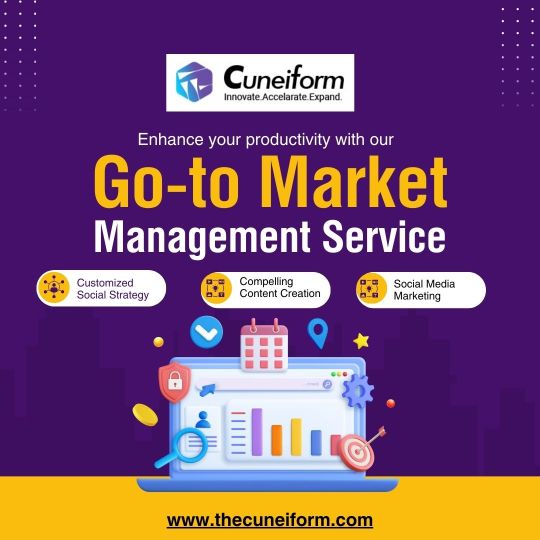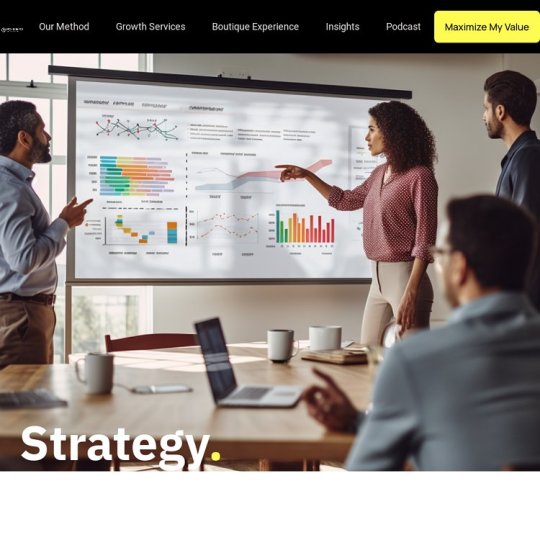#go-to-market strategy
Explore tagged Tumblr posts
Text
The Future of Product Marketing: Insights and Strategies from Jacqueline Basil
In today’s rapidly shifting business environment, product marketing is no longer just about presenting features and benefits. It’s about creating a connection between your product and your audience, driving alignment across teams, and adapting to industry changes like cloud security and digital transformation. Jacqueline Basil, a seasoned expert in product marketing, provides valuable insights into the evolving landscape of this critical function. Let’s explore the strategies, challenges, and opportunities that product marketers need to embrace in 2025 and beyond.
The Changing Face of Product Marketing
Product marketing is not static—it evolves as industries, technologies, and customer expectations change. Traditional methods focused heavily on product specifications, but today’s buyers demand tailored solutions and value propositions.
Get full insights@ https://itechseries.com/interviews/product-marketing-strategies-insights-jacqueline-basil/
According to Jacqueline Basil, successful product marketers must bridge the gap between product development and customer experience. This requires a deep understanding of both technical details and the broader market context, including shifts like the rise of cloud security in the B2B landscape.
Why Go-To-Market Strategy is the Backbone of Product Marketing
A strong Go-To-Market (GTM) strategy is essential for product marketing success. Without it, even the most innovative products can fail to gain traction in competitive markets.

Jacqueline emphasizes the importance of collaboration between marketing, sales, and product teams. A cohesive GTM strategy ensures that everyone works toward shared goals, from messaging to pricing to distribution. This alignment ultimately leads to stronger market positioning and faster time-to-market.
Understanding Customer Needs in the Cloud Security Era
Cloud security is a growing concern for businesses of all sizes, and product marketers need to address it head-on. Customers want to know how your product will help protect their data, ensure compliance, and mitigate risks.
Jacqueline recommends diving deep into customer pain points and leveraging this knowledge to create compelling narratives. For example, positioning your product as a solution to specific cloud security challenges can establish trust and differentiate your offering in the market.
Aligning Product Marketing with Sales Teams
The relationship between product marketing and sales teams is crucial. Without proper alignment, messaging can become inconsistent, and opportunities may be lost.
Jacqueline advises creating enablement resources that empower sales teams to deliver value-driven pitches. From detailed battle cards to customer personas, providing actionable tools ensures that sales teams can effectively communicate your product’s benefits and address objections with confidence.
Leveraging Data for Smarter Decisions
Data-driven decision-making has become a cornerstone of modern product marketing. By analyzing market trends, customer behavior, and campaign performance, product marketers can make informed adjustments to their strategies.
Jacqueline highlights the importance of investing in analytics tools that track customer engagement and measure the impact of marketing efforts. Whether it’s tracking cloud security adoption rates or monitoring campaign ROI, data provides the insights needed to stay ahead of competitors.
Explore the latest marketing and tech insights@ https://itechseries.com/gtm-library/
Storytelling: A Critical Skill for Product Marketers
In B2B marketing, storytelling is often overlooked—but it’s a powerful way to connect with your audience. By crafting narratives that highlight your product’s impact on real-world challenges, you can engage customers on an emotional level.
Jacqueline notes that storytelling is especially effective when addressing complex topics like cloud security. Simplifying technical concepts through relatable stories helps customers see the value of your product in their unique contexts.
The Role of Technology in Modern Product Marketing
Technology is reshaping how product marketers operate, from automation tools to advanced CRM platforms. These tools streamline processes, enhance personalization, and enable more targeted outreach.
Jacqueline suggests integrating tools that align with your Go-To-Market strategy. For example, leveraging AI-powered platforms can help predict customer behavior and optimize your campaigns for better results. Staying tech-savvy is essential for keeping up with the fast-paced B2B marketing landscape.
Building a Resilient Product Marketing Team
Behind every successful product marketing strategy is a strong team. Jacqueline emphasizes the importance of cultivating diverse skill sets within your team, including technical expertise, creativity, and analytical thinking.
Encourage collaboration across departments and invest in professional development opportunities. A resilient team can adapt to challenges, drive innovation, and execute strategies that deliver measurable results.
Get your business boost, visit now@ https://itechseries.com/contact-us/
Conclusion
The role of product marketing is more critical than ever, especially in a world shaped by digital transformation and cloud security challenges. By adopting a customer-centric approach, aligning with sales teams, leveraging data, and embracing technology, product marketers can deliver value that resonates with today’s B2B audiences. As Jacqueline Basil highlights, success in product marketing requires adaptability, creativity, and a focus on collaboration. By following these strategies, your business can thrive in an increasingly competitive market.
#Product Marketing#Go-To-Market Strategy#Customer-Centric Strategies#Data-Driven Marketing#Marketing Campaigns#Cloud Security#B2B Marketing#Cybersecurity
0 notes
Text
GTM Strategy for Efficient Sales and Marketing
Elevate your go-to-market strategy with advanced techniques, leveraging data-driven decision-making, automation, and Account-Based Experience (ABX) for efficient sales and marketing. Continue reading to learn more. Advanced GTM Strategy TechniquesData-Driven Decision-MakingAutomationAccount-Based Experience (ABX)Best Practices for a Successful GTM StrategyKey FacetsStakeholder…

View On WordPress
#business strategy#sales#startup#GTM strategy#go-to-market strategy#sales and marketing#efficient sales#marketing strategy#sales optimization#market entry#sales growth#revenue growth#customer acquisition#sales process#marketing plan#business growth#market research#sales tactics#marketing tactics#market penetration#sales funnel#marketing funnel#lead generation#customer journey#target market#marketing alignment#sales alignment#GTM plan#product launch#sales strategy
1 note
·
View note
Text
How to Create a Custom GTM Strategy by Asking the Right Questions? How to create a custom Go-to-Market strategy for your product’s success by addressing the right questions

0 notes
Link
CPL's daily case study on tumblr.... CPL Business Consultants analysed the dairy-derived ingredients sector market dynamics, and recommended a strategy for entering the business.
#dairy#dairy ingredients#wheyprotein#go-to-market strategy#market dynamics#cplconsult#managment consulting#food ingredients
0 notes
Text
FMCG Business Strategy: Comprehensive Guide for Sustainable Growth
Explore the intricacies of FMCG business strategy for sustainable growth. Discover key components like product innovation, pricing, distribution, and successful case studies in this guide.
#FMCG Business Strategy#Fast-Moving Consumer Goods#FMCG#FMCG companies#FMCG business strategy#FMCG business#Go-To-Market strategy#GTM strategy#FMCG products#Digital marketing#FMCG industry#Go-To-Market Strategy Consulting#Go-To-Market strategies#FMCG consultancy firms#FMCG Pricing Strategy#FMCG consultants#CPG Consulting firms#Strategii At Work
0 notes
Text
Listed here are five ideas for staying on top of the competition in life science marketing.Helium Advertising is a known name in life sciences marketing
strategy planning and is recognized as the perfect partner to build trust and establish your product in the market.
#Life science marketing#Life science marketing strategies#Go-to-market strategy#Go-to-market strategy Purpose#Life Science Marketing Agency#Life#Science Marketing#B2B life science marketing agency#life science marketing firm in UAE#Marketing Strategies for Life Science Companies#Life Science Marketing#Strategy#Life Science Marketing Companies in UAE
0 notes
Text

Our Digital Marketing Service can accelerate your digital journey and generate revenue. We provider SEO, SMM, PPC Services in USA. Go-to market technique (GTM) describes all aspects of the preparation and execution of bringing a product or service to market.
0 notes
Text

Orchid Black is a revenue growth consulting firm that specializes in helping companies accelerate their growth and achieve sustainable revenue growth. The experienced team of revenue growth consulting firm works closely with clients to identify strategic growth opportunities, develop actionable plans, and implement effective revenue generation strategies. They provide a comprehensive range of services including market analysis, sales optimization, pricing strategy, customer experience improvement, and go-to-market strategy. With their expertise and proven track record, Orchid Black helps companies unlock their full revenue potential and drive long-term business success.
0 notes
Text
y'all remember when book fairs used to have those "banned books" display sections that advertised books based on that fact that they had been banned in schools in the past and everyone went "haha wow, it's crazy that they banned books like this! what a wacky thing to do!" haha........ yeah....... who would even do that......

#damien.txt#honestly i would prefer to go back to ppl using it as a marketing strategy than it just. happening! in my state!#i'm so tired fr morality wars make me want to curl up in a ball & choke#yeah sure the books are indoctrinating your child. the exact same way YOU. the parent. are indoctrinating them.#sorry it's from a different viewpoint i forgot that we're all trying for a homogenized society here. land of the free and all that.#just generally speaking the shit that is getting passed in my state.... truly beyond belief.#shoutout to the diversity programs that are fully just. getting defunded! by state law! how haha funny of them.#please get me out of here i'm desperate#us politics#politics
1K notes
·
View notes
Text

YALL IM FOAMING OUT OF MY MOUTH
#marvel pizza#wolverine x deadpool#deadpool and wolverine#deadpool 3#marketing strategy i swear#poolverine#deadclaws#honda odyssey#pizza and its LIKE THAT TAKE MY MONEY#TAKE MY MONEY AWAY FROM ME#it now follows me everywhere I go#wade wilson#loganpool#logan howlett#ryan reynolds#hugh jackman
62 notes
·
View notes
Text
Insights from Simone Bervig on Driving GTM Success
In today’s dynamic landscape of B2B technology, successful go-to-market strategies demand more than just cutting-edge products—they require seamless cross-functional collaboration that bridges cultures, markets, and teams. Simone Bervig, a seasoned expert in global GTM strategies, offers invaluable insights into navigating these complexities.
This blog unpacks Simone’s unique perspectives, highlighting actionable tactics for fostering unity across functions and regions. Dive in to explore how your organization can bridge gaps, align goals, and drive growth in an ever-evolving business environment.
The Power of Cross-Functional Collaboration in B2B Technology
In the world of B2B technology, collaboration across departments is not just a buzzword—it’s a necessity. Organizations often struggle with siloed teams, leading to disjointed efforts that hinder growth.
Get full insights@ https://itechseries.com/interviews/bridging-markets-and-teams-simone-bervig-on-gtm-success/
Simone Bervig emphasizes that true success lies in breaking down these silos. By creating a culture where marketing, sales, and product teams work in unison, companies can streamline efforts and amplify their impact. Cross-functional collaboration fosters a shared sense of purpose, enabling businesses to deliver cohesive and impactful results.

What Makes a Go-to-Market Strategy Successful?
A successful go-to-market strategy is much more than a checklist; it’s a blueprint for aligning teams, understanding markets, and resonating with customers. According to Simone, the foundation lies in clarity and communication.
When all teams are aligned on goals, timelines, and responsibilities, the chances of achieving market success multiply. Additionally, adaptability is key—embracing feedback and making data-driven adjustments ensures strategies remain relevant in a fast-changing landscape.
Bridging Cultural Differences Across Global Teams
Operating in a global market means navigating diverse cultural perspectives. Simone points out that cultural awareness is a critical component of cross-functional success.
By acknowledging and respecting differences in communication styles, work ethics, and decision-making processes, organizations can build trust and strengthen collaboration. Hosting regular workshops or team-building activities can foster mutual understanding and create a more inclusive work environment.
Aligning Markets and Teams for Unified Goals
Markets and teams often function at different paces, but uniting them under a single vision is vital. Simone suggests adopting a framework that prioritizes shared objectives while allowing flexibility for local adaptations.
Explore the latest marketing and tech insights@ https://itechseries.com/gtm-library/
Leveraging tools like real-time communication platforms and collaborative software can bridge geographical gaps. Regular updates and transparent reporting ensure all teams remain focused on common goals, creating a more synchronized approach to market entry.
How to Build a Customer-Centric Go-to-Market Strategy?
Customer insights are the backbone of any effective GTM strategy. Simone stresses the importance of integrating the voice of the customer at every stage, from ideation to execution.
Collecting feedback through surveys, focus groups, and data analytics provides a comprehensive view of customer needs. Armed with this knowledge, teams can craft messaging and solutions that resonate, leading to higher engagement and better outcomes.
Overcoming Challenges in Cross-Functional Collaboration
Despite its benefits, cross-functional collaboration comes with its challenges. Simone highlights common hurdles, such as conflicting priorities and communication breakdowns.
To address these issues, organizations must establish clear protocols and accountability measures. Regular cross-departmental meetings and open channels for dialogue can help resolve conflicts before they escalate, ensuring smoother collaboration.
The Role of Leadership in Driving GTM Success
Leadership plays a pivotal role in aligning teams and driving success. Simone believes that leaders must act as facilitators, encouraging collaboration while setting clear expectations.
By investing in training programs that enhance leadership skills, organizations can foster a culture of mentorship and guidance. Strong leadership ensures that every team member feels empowered and aligned with the company’s mission.
Future Trends in Go-to-Market Strategies for B2B Technology
The future of B2B technology lies in adaptability and innovation. Simone predicts a growing emphasis on leveraging AI and automation to enhance GTM processes.
By integrating these technologies into cross-functional workflows, organizations can improve efficiency and decision-making. Additionally, focusing on sustainability and ethical practices will play a significant role in shaping market strategies as customers increasingly value socially responsible businesses.
Get your business boost, visit now@ https://itechseries.com/contact-us/
Conclusion
Driving GTM success requires a harmonious blend of cross-functional collaboration, cultural awareness, and customer-centric strategies. Simone Bervig’s insights offer a roadmap for organizations aiming to thrive in the complex world of B2B technology. By fostering unity across teams, embracing diversity, and staying ahead of market trends, businesses can unlock unparalleled growth and establish themselves as leaders in their field.
#B2B Technology#Cross-functional Collaboration#Go-to-Market Strategy#GTM Strategies#LATAM Marketing Strategy#Marketing campaigns
0 notes
Text
What is a Go-to-Market Strategy in marketing and its importance
What is a GTM strategy in product marketing and how can businesses utilize it for better market performance. Read More : https://wseinfratech.com/blog/an-introduction-to-gotomarket-strategy-a-vital-pillar-in-product-life-cycle
#Market Strategy#Product Life Cycle#business strategies#Go-to-Market Strategy#Purpose of Planning#Advantages of competent GTM Strategy
1 note
·
View note
Link
CPL's daily case study on tumblr.... CPL Business Consultants formulated a strategy for plant growth promoting microorganisms (PGPM) sold into agricultural biostimulants market.
#pgpm#plant growth regulators#agriculture#go-to-market strategy#management consulting#biostimulants market#cplconsult
0 notes
Text
is it just me or is bioware spoiling way too much about the game . talking about gameplay improvements is one thing but revealing story and companion arcs seems very insecure to me bc now the mystery is gone when people play for the first time . seems like they're trying too hard to prove that their game isn't garbage after that first trailer but this is not how you do that
#show gameplay#show how side quests work#show how the levels work if it isn't 'open world'#show crafting systems show transmog and a quick demo of how companion approval looks#show us the goddamn character creator already#even just show how the lighthouse works but dont?? start companion quests??#like it makes sense now why the writers were adamant that taashs pronouns were she/her idk why they had to reveal that point of their arc#bc youre NOT supposed to know what theyre going through yet . i liked the mystery surrounding them but ok thats gone#ive never seen this happen b4 i would never promote my game or writing through spoilers youre just sabotaging yourself#luckily for most people their brains are small so they might forget anyway#but still this is a weird marketing strategy#how did larian manage to pull in so many people through a stupid bear stunt and no story spoilers#and bioware has to cry and scream about how☝️🤓solas is good actually and our companions are soso complex trust us please please please plea#and also don't get me started on the character and enemy designs . a downgrade for sure#um lol also its a bit weird that taash is the only nb one but this isnt the post to talk about that .#bioware making their trans rep weird yet again . all we need is for rook to ask taash invasive questions and welcome back krem dragon age#six speaks#bioware critical
17 notes
·
View notes
Text
Go-to-Market Tips for Life Science Organizations
Table of Content:
What Is Life Science Marketing?
Purpose of Go-to-market Strategy
Five Tips for Successful GTM Strategies for Life Science Organizations
How Helium Helps for GTM Strategy
Conclusion
Life science is a world where every innovation needs to make an impact but it cannot be possible without appropriate marketing of that innovation. Life science marketing is not only about selling a service or product; it’s about the right way of transferring information, building trust, and delivering cutting-edge developments that can enhance human well-being.
What Is Life Science Marketing?
Life science is an industry that evolves continuously with a lot of inspiring discoveries and advanced applications. But every new product or service requires the right marketing to make its place in the market. Here comes the role of life science marketing to promote services, products, and technologies related to this industry. With the utilization of this marketing, scientists and marketers can enhance awareness, improve understanding, and simplify access to the latest developments. To develop the right life science marketing strategies, it is important to consider a lot of factors regarding branding and regulations.
Purpose of Go-to-market Strategy
The go-to-market strategy is related to the pre-marketing and pre-sales stages. A strong go-to-market strategy purpose is to comprehend who is target audience and which process you need to follow to improve your sales. With a solid GTM strategy in the life science industry, you must sell the product or service to showcase its market value before launching that product or service. The GTM strategy in life sciences is to transfer information about complex scientific concepts in simple words just like a business plan to the end customer.
Five Tips for Successful GTM Strategies for Life Science Organizations
The life science industry is growing constantly and the competition in this industry is also growing every day. Every company in the life science industry wishes to stay ahead when it comes to promoting their services or products. Here are five tips to keep up your game in life science marketing:
Learn About Your Audience:
For any successful marketing campaign, it is important to learn more about the target audience. In the case of life science marketing, a life science marketing agency should know everything about potential customers, their requirements, and their motivating factors to buy the product. As per the marketing strategies for life science companies, the pain points, goals, and challenges of the target audiences should be known before planning the marketing strategy.
Alignment of Sales and Marketing:
To make everything work better, it is significant to align sales and marketing teams. Although the objective of both teams is similar misalignment of strategies and implementation happens. Because of this misalignment, it has been observed that it leads to poor KPIs like low win rates and customer retention rates. A proper alignment of both teams results in the delivery of the right message at the right time using the appropriate channel.
Utilize Content Marketing:
With the utilization of the right content marketing, you can educate and engage a life science audience easily. Many powerful tools that help in delivering meaningful information in the right way. These tools include whitepapers, blogs, emails, guides, and many more. This way you can build trust with the target audience and establish yourself as the thought leader.
Multi-Channel Approach:
Adopting a multi-channel approach is one of the perfect go-to-market tips for a B2B life science marketing agency. When you can demonstrate your presence on different platforms, it leads to the strengthening of the reputation of your brand. Website, social media, paid advertising, print & direct mail, online surveys, and online forums are some of the examples of these platforms.
Association with Key Opinion Leaders:
Associating with Key Opinion Leaders is the best way for life science companies to improve reliability and gain exposure. Also known as Thought Leaders, Key Opinion Leaders are known for their expertise. You can leverage their expert opinions by collaborating with them to conduct research or speak at the event. This helps in building trust and establishing yourself as a reliable resource in the industry.
How Helium Helps for GTM Strategy
Helium Advertising is a known name in life sciences marketing strategy planning and is recognized as the perfect partner to build trust and establish your product in the market. With this life science marketing agency, you just have to tell them your requirements and they will come up with a strong life sciences marketing strategy to create unique and successful marketing.
When you associate with this company, you can be assured that you will reach the heights where you want to be in the future. They will evaluate you where you are and understand where you want to reach in the future and offer you a series of actions to follow. They have a team of experienced professionals who have a deep understanding of the life science industry and marketing.
Conclusion:
Marketing serves as the bridge between intricate scientific concepts and the requirements of the target audience. To accomplish success in life science marketing, you must follow these five tips and accept the latest trends completely.

#Life science marketing#Life science marketing strategies#Go-to-market strategy#Go-to-market strategy Purpose#Life Science Marketing Agency#Life Science Marketing#B2B life science marketing agency#life science marketing firm in UAE#Marketing Strategies for Life Science Companies#Life Science Marketing Strategy#Life Science Marketing Companies in UAE
0 notes